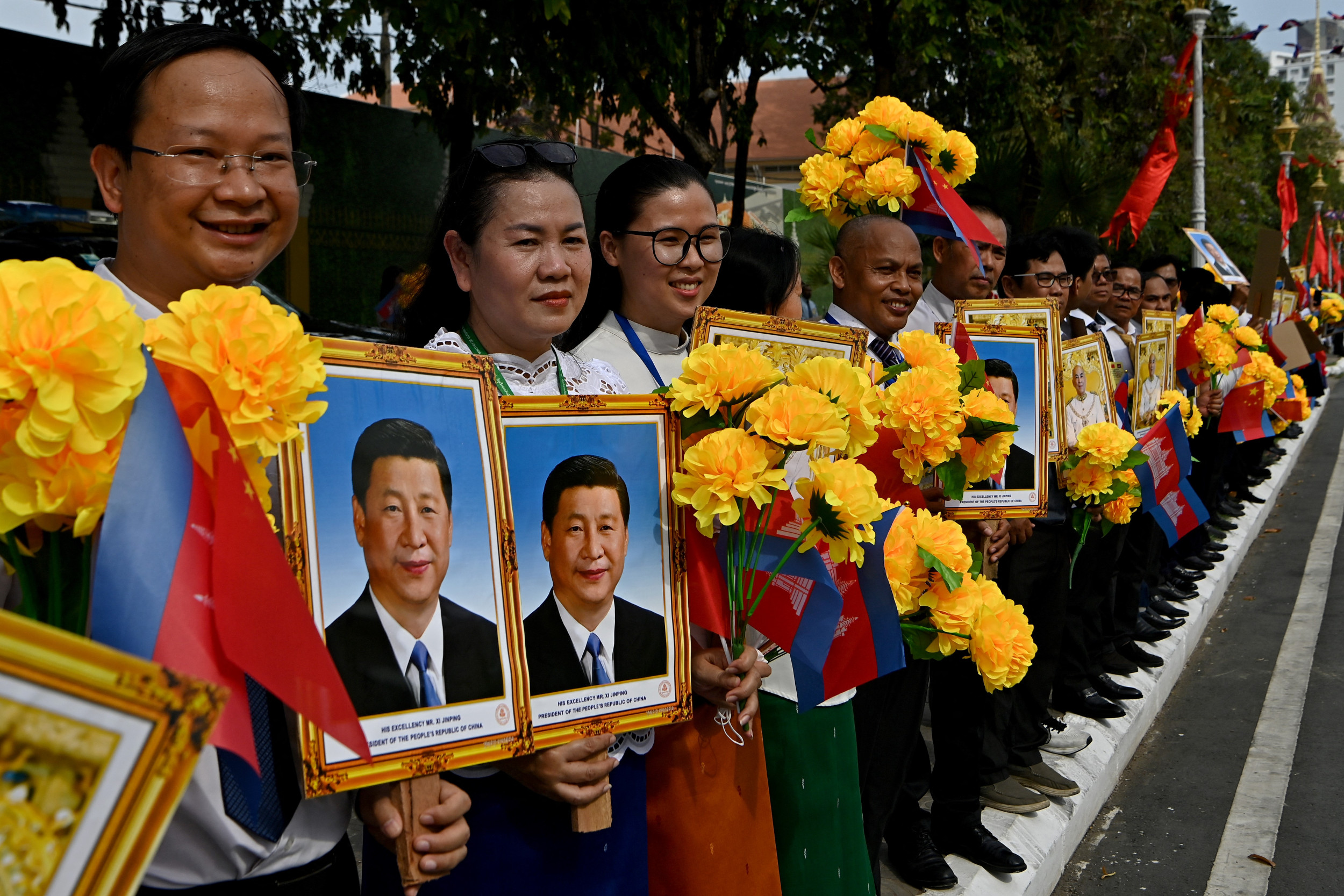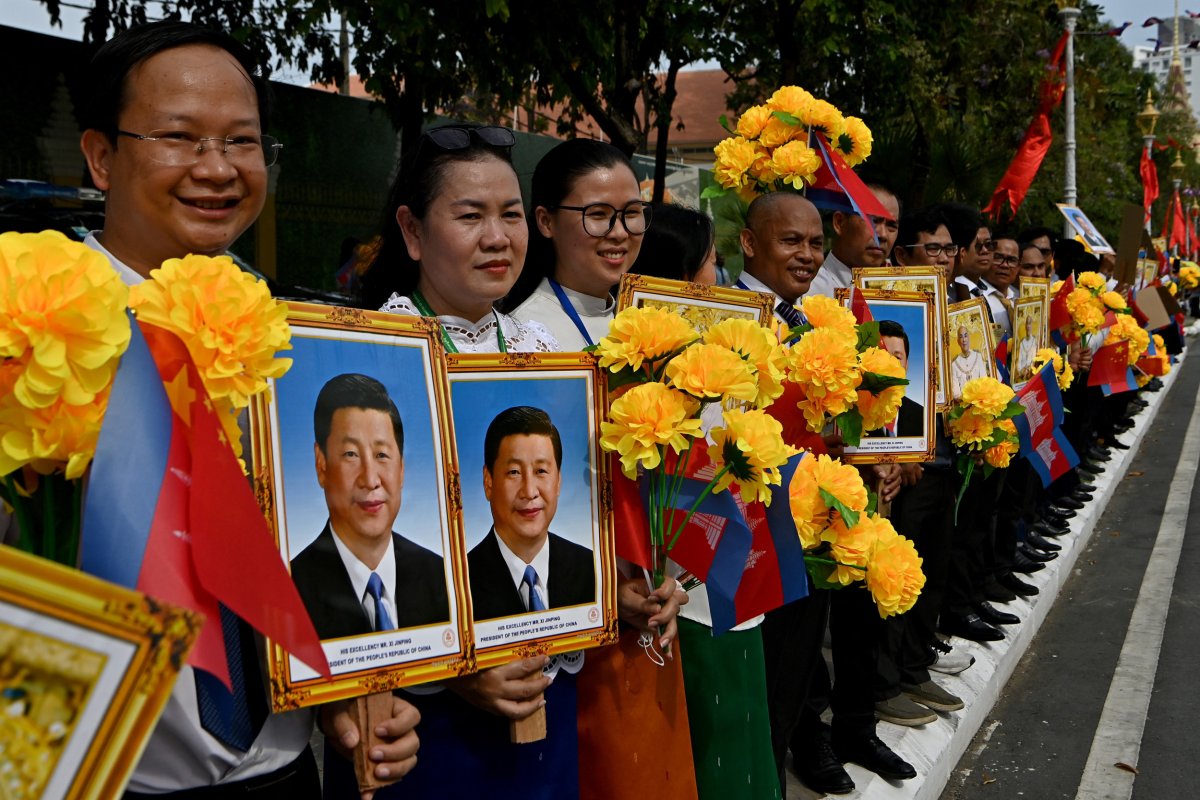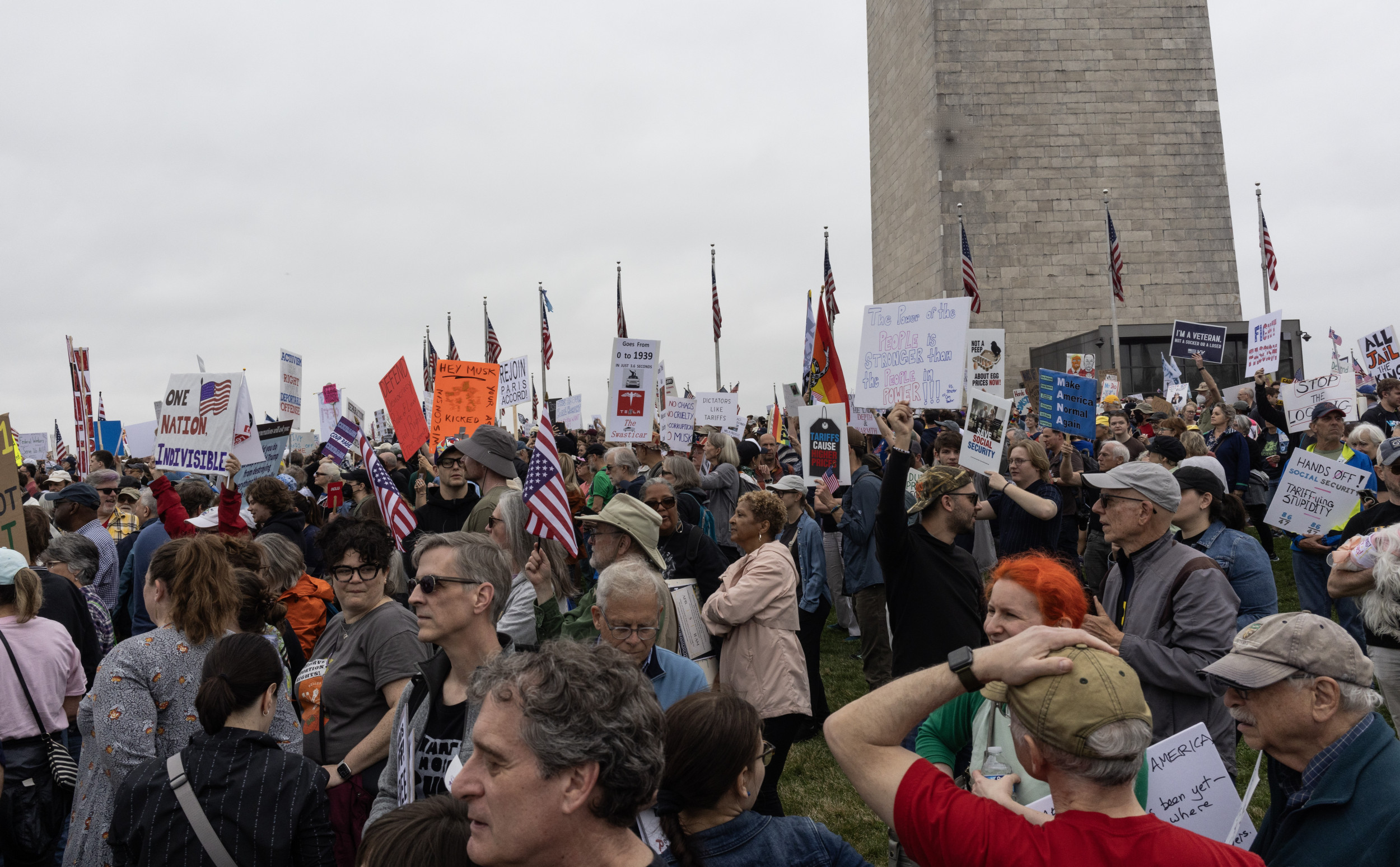
Chinese President Xi Jinping has wrapped up a whirlwind tour of Southeast Asia, seeking to rally support amid U.S. President Donald Trump‘s chaotic trade offensive.
Newsweek reached out to the U.S. Department of State by email outside of office hours.
Why It Matters
The sweeping tariffs Trump imposed on scores of countries and regions earlier this month—many of them were later walked back—shook global markets and revived uncertainty over U.S. trade policy. The president aims to bring manufacturing jobs back to the country and strong-arm trade partners into lowering “unfair” tariffs—or taxes on foreign imports.
China looms large as the top trade partner for nearly every Association of Southeast Asian Nations (ASEAN) member. However, Chinese neighbors such as Vietnam are wary of the superpower’s territorial expansion in the South China Sea and seek to balance this economic dependency and security ties with the U.S.

Tang Chhin Sothy/AFP via Getty Images
What To Know
During his five-day tour, which included stops in Vietnam, Malaysia, and Cambodia, Xi met with leaders and signed a flurry of memorandums of understanding covering everything from transportation and customs to artificial intelligence.
All three countries were initially swept up in Trump’s “reciprocal tariff” policy—before the president abruptly announced a 90-day pause last Wednesday.
Chinese Foreign Ministry spokesperson Lin Jian hailed, “Asian values of peace, cooperation, openness, and inclusiveness” as the way forward for the region, during Thursday’s regular press briefing.
“President Xi Jinping…is ready to sign the protocol on upgrading the China-ASEAN Free Trade Area with regional countries as soon as possible, resist decoupling and broken chains; small courtyards and high wall; and indiscriminate tariffs with openness, inclusiveness, solidarity and cooperation, the official said.
Reacting to Xi’s Monday talks with Vietnamese officials, Trump said the countries aimed to “figure out ‘how do we screw the United States of America?'”
What People Are Saying
Kin Phea, director general of the International Relations Institute of Cambodia, told Chinese state media outlet the Global Times: “[The visit] is a powerful driver to elevate our already strong ties, ensuring long-term peace, stability, prosperity, and friendship for both nations and the broader region.”
Raji Pillai Rajagopalan, resident senior fellow with the Australian Strategic Policy Institute, told the Australia Broadcasting Corporation: It’s very interesting to see how Xi Jinping is trying to project China as the force of stability, certainty, and predictability, but I think we need to see how this plays out.
“China has been quite disrupting [sic] in the region—both in terms of terms of trade and, of course, in security terms. And we all continue to see that, so Xi has a lot of work to make sure there is conformity between his actions and words in a sense.”
What’s Next
Neither Washington nor Beijing have signaled they’re likely to give ground soon.
Analysts have said Southeast Asia is one region that could help cushion the impact of the tariffs through expanded trade with China and as a potential waypoint for U.S.-bound Chinese goods.





